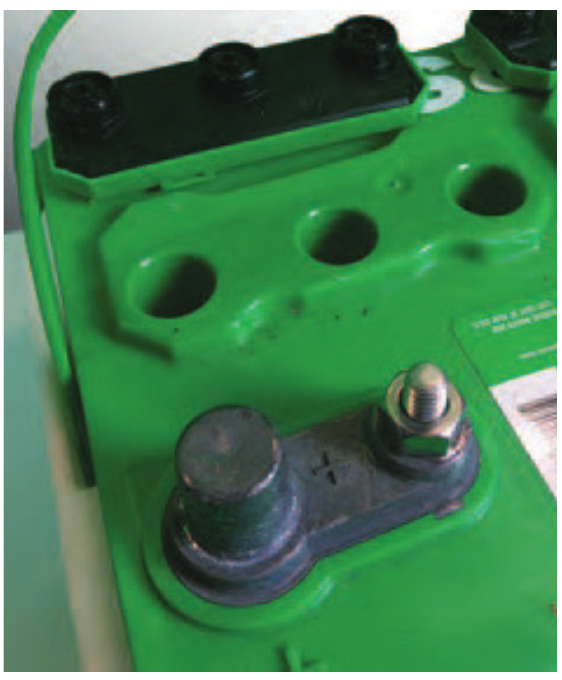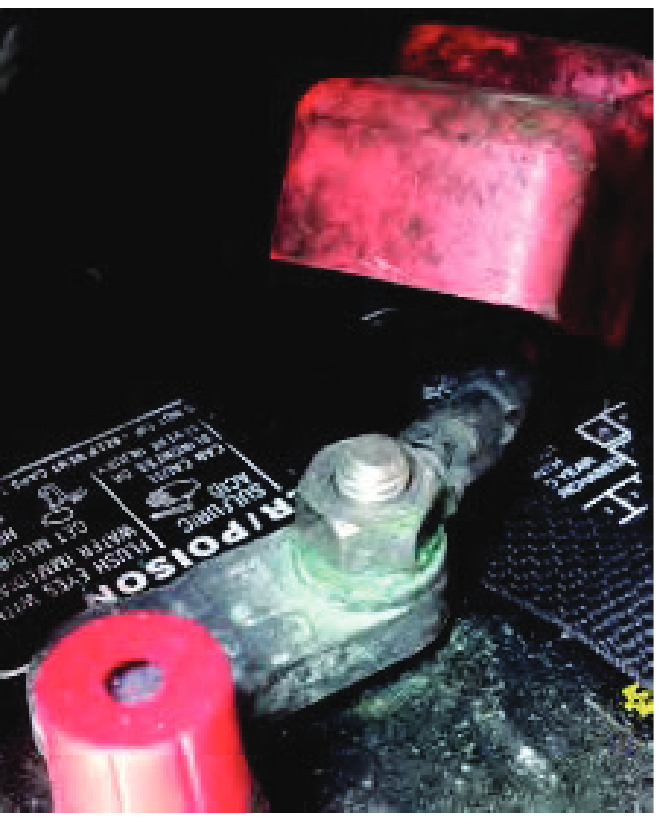Whenever your doing boat maintenance, checking the battery is crucial to ensure
that the heart of the vessel is functioning as it should.
First, check to see if the battery connectors are secured with wing nuts or hex nuts. If they have wing nuts
installed, replace them with hex nuts and lock washers. Next, check to see if the battery cables are clean and the
connections are tightly secured. Loose connections are often responsible for intermittent issues or hindering
the motor from turning over. If the cables are dirty or corroded, it can inhibit the ability of electricity to travel.
Sometimes corrosion can develop underneath the terminal. In this case, it’s best to err on the side of caution
and fully disconnect and clean both sides of the connector. Once clean and shiny, reinstall and tighten the
connector as specified in the service manual. To combat future corrosion, apply Yamashield™ protectant and
lubricant (P/N: ACC-YAMSH-LD-00) to all connectors.
Another aspect to consider is determining if a battery is a serviceable lead-acid (“flooded”) type or maintenance-
free. Remember, if a battery has removable vent caps, then the battery is serviceable. If vent caps are absent, it’s
a maintenance-free battery. Although, some battery manufacturers have a sticker placed over the vent caps. If
the sticker has a perforation line running through it, you will need to tear it off in order to access the removable
vent caps.

By doing so, you will know that checking the fluid levels periodically is needed. If you are still
uncertain, you can always check with the battery’s manufacturer to confirm if it’s serviceable or not. Also, as a
reminder, do NOT use lithium batteries* as they are not compatible with Yamaha’s outboard charging systems.
If the battery is serviceable, the fluid levels should be checked every two months. However, if in warmer
climates, the battery’s fluid levels will need to be checked more regularly. The battery should also be fully
charged because the fluid levels are highest at full charge. It is important to make sure not to overfill the cells
to prevent electrolyte from leaking out. Additionally, use distilled water when topping off the cells as tap water
contains minerals as well as chemicals that can shorten the life of the battery.

If testing with a voltmeter, a fully charged “wet cell” battery should have a minimum reading of 12.7 volts. An
AGM or gel cell will be slightly higher at 12.8–12.9 volts. A completely discharged battery will read below 12 volts.
A dead cell will read at anything below 11 volts.

When it comes to storing a battery in the off season, there are
several things to remember. First, the battery should be fully
charged, and the fluid topped off. Second, ideally both cables
should be removed from the battery terminals, and the battery
should be kept in a dry area where the temperatures range
between 40ºF and 70ºF. These conditions will minimize the rate
of self-discharge to about 5% discharge per month. At this rate,
it will take five or six months for the battery to drop below a 75%
charge or a specific gravity of 1.225. This is important because it is
at this point where sulfation begins. Sulfation hardens the battery
plates, which leads to the battery’s inability to hold a charge.
Almost one third of all batteries today fail within two years and the
number one cause of failure is sulfation. Some common causes
of sulfation are over or undercharging, usually the result of using
a cheap or older charger; temperatures below 32ºF or over 100ºF,
low electrolyte levels, and parasitic drains. However, if caught early
enough, sulfation can be reversed using a “smart” charger. Another
cause of sulfation is corrosion. If the cable connections to the
terminals become corroded, it hinders the charging process.
If you have to install a new battery in a boat, make sure to use the size and type that is specified in the
applicable outboard motor’s Owner’s or Service Manual. Lastly, vibration causes premature failure. Proper
installation plays an important role in extending the life expectancy of a battery. A battery should be secured so
that it won’t budge when pushing or pulling on it.